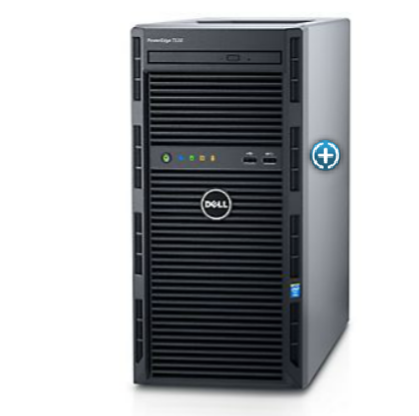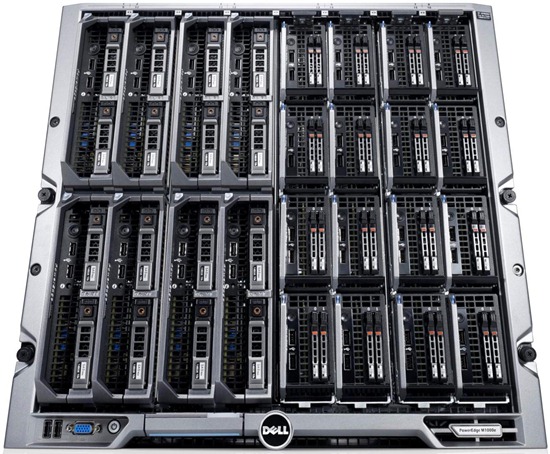Servers
In this section, we will take a look at different types of servers. There are three types of physical Servers:
- Tower
- Rack
- Blade
1. Tower Servers:

This type of server looks like a desktop cabinet. This type of server does not require a great deal of maintenance and is useful for small companies who want to begin using servers for relatively low end jobs. Generally, a tower server can accommodate up to 6 drives and two processors. For a large number of tower servers, cabling can get clumsier and would also consume a lot of space.
2. Rack Servers:

A rack server is designed to be positioned in a bay, which enables you to stack various devices on top of each other in a large tower. The bay will accommodate all of the hardware devices the company needs to function, including the server, storage devices, and security and network appliances.
The benefit of this type of server is that, having all components of the system located in the same place (in a single Rack) makes it easier to manage connections and maintain the system. The bay is, in a way, the 'data center' of the organization.
3. Blade Server:

Blade server is the latest development in the history of the different types of servers. Slim and compact, just like a blade, they slide vertically into a specially designed chassis. They share certain elements of the hardware with other blade servers in the chassis for the purposes of efficiency and cost reduction. Blade servers, for example, use a single feed positioned on the host compartment.
Blade servers will give us much greater processing power, take up less space and use less energy than other forms of servers used for the same purposes. However, Blade servers are expensive when compared to Tower or Rack servers.